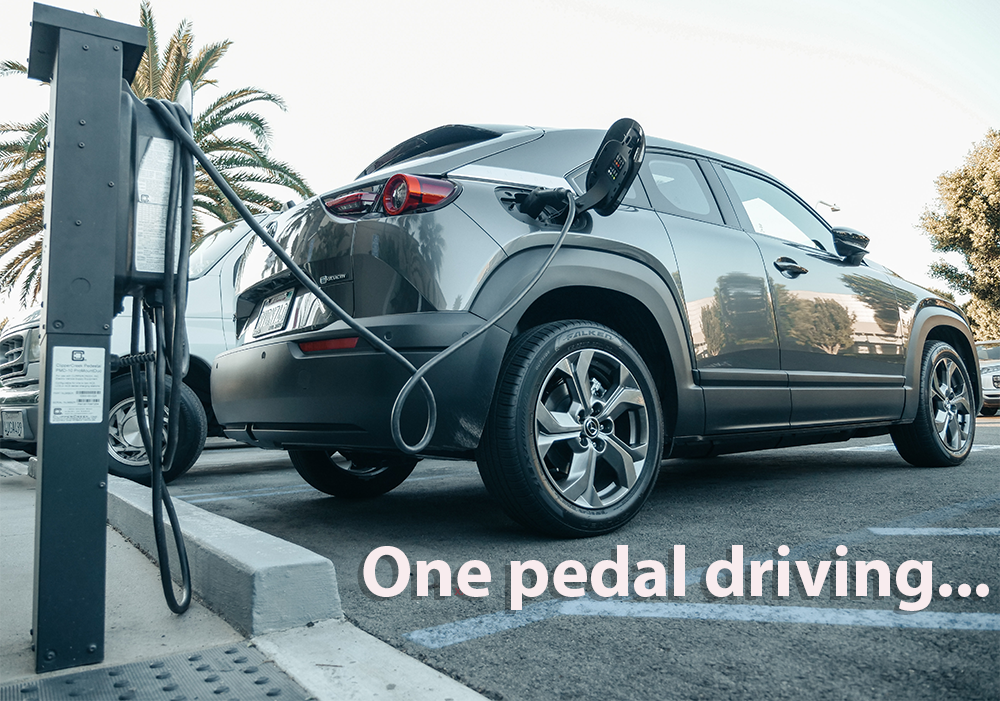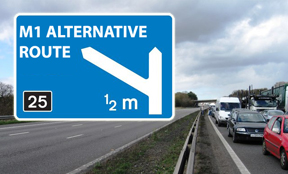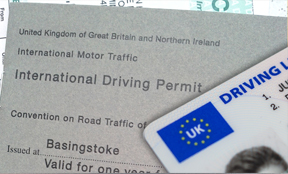
One pedal driving is a driving style that allows a driver to control both the acceleration and the braking on a vehicle using just one pedal.
It's a feature that is becoming increasingly common in electric vehicles (EVs) with many preferring for its convenience and efficiency over traditional two-pedal driving.
Here we'll explain what one-pedal driving is, how it works, and its benefits for EV drivers.
 You
may have heard the phrase 'one pedal driving' so here's what it means, what cars have it,
and how it works. (Photo: Pexels.com)
You
may have heard the phrase 'one pedal driving' so here's what it means, what cars have it,
and how it works. (Photo: Pexels.com)
What is one pedal driving?
One-pedal driving is a feature in electric vehicles – or EVs as we’ll refer to them - that allows a driver to control the speed of the car using, you’ve guessed it, one pedal. Instead of using both the accelerator and brake pedals, the driver uses the same pedal to accelerate and decelerate the car. When the driver pushes down on the pedal, the car accelerates as with any other car. But when the driver releases the pedal, the car begins to slow down, or even stop completely in some circumstances.
How does one pedal driving work?
One-pedal driving works by using regenerative braking, a technology found in EVs – and Formula One cars - that converts the kinetic energy of the car into electrical energy and stores it in the car's battery – delivering free power and an improved range. When the driver releases the accelerator pedal, the regenerative braking system kicks in and slows the car down by converting its kinetic energy into electrical energy.
The level of this regenerative braking can be adjusted to provide varying levels of deceleration. In some EVs, the driver can do this while driving using a switch or a button on the dashboard. This allows them to choose how much the car slows down when they release the accelerator pedal.
Benefits of one pedal driving
One pedal driving offers several benefits to EV drivers. Here are some of the main ones to consider:
- Improved efficiency: One pedal driving can improve the efficiency of an EV by reducing the amount of energy needed to slow the car down. When the driver releases the pedal, the car slows down, and the regenerative braking system converts the car's kinetic energy into electrical energy, which is stored in the battery. This means that the driver can slow the car down without using the brake pedal, which reduces the wear and tear on the brake pads and improves the car's overall efficiency – and adds power to the battery at the same time. This is basically free energy.
- Convenience: One pedal driving is more convenient than using both the accelerator and brake pedals, as the driver only needs to use one pedal to control the speed of the car. This can make driving in stop/start traffic jams less stressful and less of a chore, as the driver doesn't need to keep switching between the accelerator and brake pedals – or clutch.
- However, it can certainly take a while to get used to, so the ‘convenience’ aspect may take a little longer to show itself for some drivers more used to tradition driving styles.
- Safety: In some cases, once the drivers is accustomed to using the system, one pedal driving can also improve safety by giving the driver more control over the car's speed. Because the car slows down when the driver releases the pedal, the driver can slow down more gradually than if they were using the brake pedal. This can reduce the risk of sudden stops and jerky movements, which can be uncomfortable for passengers and potentially dangerous in certain situations.
However, one pedal driving is not recommended when driving down steep hills, with a heavy load, or in slippery conditions such as in rain, snow or muddy conditions.
Challenges that come with one pedal driving
While one-pedal driving offers many benefits as we described abover, there are also some challenges to consider:
- Learning curve: One pedal driving will take a while to get used to, especially for drivers who are used to using both the accelerator and brake pedals.
- Limited use: One-pedal driving may not be suitable for all driving situations. For example, when driving downhill, the car may not slow down enough using regenerative braking alone, and the driver may need to use the brake pedal to slow the car down more quickly.
- Battery degradation: Regenerative braking can cause additional wear and tear on the car's battery, which can lead to degradation over time. However, most EV car makers have designed their cars to minimize this effect.
Do all EVs have one pedal driving?
No. Not all electric motors have this features, so make sure you do your research before you buys. And make sure you try the feature out during any test drive you take in such a vehicle.
More on electric vehicles and clean air
-
EVs and the London congestion charge
-
Electric van licence rules
-
Charging EVs in flats
-
EV charging at airports
-
Are electric car drivers more likely to crash - research revealed
-
EV range in hot weather
-
How to charge electric cars in the UK
-
Should you buy an electric car?
-
How to hire an electric car
-
Electric car licence and test rules
-
Most popular electric cars in the UK
-
EV charging in France for UK drivers
Latest motoring news
Take a look at more of our top motoring-related content here...
-
CAR TAX SHOCK: How much is my car tax going to go up by?
-
CAN I STILL DRIVE?: My driving licence has expired - can I keep driving while I wait for a new one?
-
DRIVERS IN 20MPH PERIL: How fast in a 20mph zone will get a speeding ticket in London
-
TESTING TIMES: Can I book cancelled driving tests to beat the rush?
-
M25 JAM BUSTER: M25 alternative routes
-
SECRET PARKING FINES: Secret parking offences you're committing but don't realise
-
SUNGLASSES SHOCK: Are my sunglasses legal for driving - how to check instantly?
-
NUMBER PLATES EXPLAINED: How old is a car by its number plate? Full list
-
SPEEDING TICKET CHECK: Will I always get a speeding ticket after being flashed
-
AVOID POINTS: Will I get a speed awareness course instead of points?
-
DRIVING ABROAD DOCUMENTS: Do I need an international driving permit for France, Spain, Greece and more
-
WHITE LINES EXPLAINED: What are the rules around double white lines and the risk of £1,000 fine?
-
BRUM: DEAL Do I pay the Birmingham Clean Air Zone at weekends?
-
GOT YOUR NUMBER: What does my driving licence number reveal about me?
-
FAKE COP SHOCK: How to spot a fake undercover police car
-
VAPE RULES: Can I vape in a car with kids in it?
-
LICENCE TIMES: When can I apply for a provisional licence?
-
E-SCOOTER LAWS: Are electric scooters Legal in the UK now? When is the law changing?
-
SLIDERS MUST-KNOW: Can I drive in sliders in the UK?
-
DOT CHECK: What are the black dots on my windscreen for?
-
CAR TRACKER: How can I find out who owns a car
-
TYRE-CHECK TOOL: How old are my tyres - find out instantly here
-
CAR FUTURE: What happens to a car when the owner dies?
-
SPARE WHEEL RULES: How far and how fast can I drive on a space saver spare wheel
-
TICKET RISK: Can I be fined if the car park ticket machine is not working?
-
M6 JAM BUSTER: Is the M6 Toll Road free in the evening and at weekends?
-
PAY OR NOT PAY: How much is the Tamar Bridge toll and when do I need to pay it?
Subscribe for free motoring and travel news from PeteBarden.co.uk
Author: Pete Barden:
Twitter: @pete_barden
Pete Barden is a qualified journalist who has written and produced for publications including The Sun (thesun.co.uk), New Statesman Media Group, Whatcar? (Whatcar.com) Stuff Magazine (Stuff.tv), Fastcar Magazine (Fastcar.co.uk), Maxim Magazine and UK broadcast stations within the Heart network (Formerly GCAP). Pete specialises in motoring and travel content, along with news and production roles. You can find out more about Pete Barden on LinkedIn.











